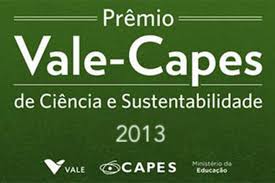Management optimization for the cultivation of White Shrimp Litopenaeus vannamei in greenhouse systems with bioflocs
Author: Dariano Krummenauer (Currículo Lattes)
Supervisor: Dr Wilson Francisco Britto Wasielesky Junior
Co-supervisor: Dr Luis Henrique da Silva Poersch
Abstract
In recent years, aquaculture has moved towards cultivation systems that aim to increase productivity and reduce effluent emissions. One of the strategies that has been tested is the cultivation of marine shrimp in biofloc systems (BFT). In this system, nitrogen accumulation is controlled by manipulating the carbon / nitrogen ratio, which favors the development of heterotrophic bacteria. As a result, the ammoniacal nitrogen present in the crop is removed through assimilation by microbial biomass, generating an important source of protein for the cultivated shrimp. In addition, it allows the cultivation to be carried out without water renewal. Within this context, the present work aims to contribute to the development of the cultivation of Litopenaeus vannamei in BFT system, in southern Brazil. For this,five experiments were carried out at the Marine Aquaculture Station (Institute of Oceanography, Federal University of Rio Grande, RS, Brazil) and one experiment at Texas Agrilife Research (Texas A&M University, Corpus Christi, TX, USA). Each experiment carried out is described in the following chapters: (1) Effect of reusing water with bioflocs with different percentages in a new cycle of cultivation of marine shrimp in a biofloc system; (2) Effect of the reuse of different levels of bioflocules on zootechnical performance and water quality parameters in an experimental system, in high storage density and operated without water renewal; (3) Comparison of the growth performance of L. vannamei in a BFT system carried out in greenhouses analyzing the effect of different depths;(4) Use of different types of aeration in intensive systems without water renewal: effect on the formation of bioflocs, growth and survival of L. vannamei; (5) Analysis of the capacity of “Taeration nozzles” air injectors on zootechnical performance and water quality parameters in a super-intensive cultivation system for L. vannamei and (6) Analysis of the use of probiotics in the cultivation of L. vannamei in the BFT system contaminated with Vibrio parahaemolyticus. For the tests, a rectangular greenhouse with 9 tanks of 35,000 L (experiments 3, 4 and 6), 15 boxes with a useful volume of 800 L (experiments 1 and 2) and a greenhouse with two tanks of 100,000 L (experiment 5 ). Experiments 1 and 2 showed the advantages of using wastewater for a subsequent cultivation cycle in a BFT system; in experiment 3,the prawns showed better zootechnical performance when they were grown at depths of 0.40 and 0.80 m; in chapter 4, the air diffuser (blower) presented the best result in the formation of microbial aggregates and in the zootechnical performance of the shrimp; in the fifth experiment, the results proved that the aeration system “Taeration” can be used as a source of aeration in BFT systems; in the sixth chapter it was possible to observe the effectiveness of the use of probiotics in the control of Vibrio parahaemolyticus present in the cultivation of L. vannamei in BFT systems. Thus, the results of the present study helped in the development of a basic technological package for the implementation of L. vannamei cultivation in BFT systems, in southern Brazil.in chapter 4, the air diffuser (blower) presented the best result in the formation of microbial aggregates and in the zootechnical performance of the shrimp; in the fifth experiment, the results proved that the aeration system “Taeration” can be used as a source of aeration in BFT systems; in the sixth chapter it was possible to observe the effectiveness of the use of probiotics in the control of Vibrio parahaemolyticus present in the cultivation of L. vannamei in BFT systems. Thus, the results of the present study helped in the development of a basic technological package for the implementation of L. vannamei cultivation in BFT systems, in southern Brazil.


